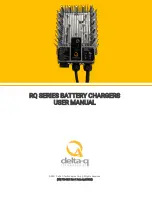
English –
121
12.8 Pedals
Pedals
Speed potentiometer
Forward pedal
Reverse pedal
P-brake pedal switch
Inactive
Inactive
Engaged
0
This box shows the signal from the speed potenti-
ometer, the signal from the Forward pedal and the
signal from the Reverse pedal plus the signal from
the P-brake pedal. When moving forward with the
machine, it should say Forward pedal Active and
P-Brake signal not engaged, then a rising signal is
obtained on the graph for the speed potentiometer
depending on how far the pedal is pressed. If the
machine is now driven but it is perceived as going
too slow forward, first check that the signal on the
graph for the speed potentiometer rises to at least
70 % of the scale. You can then look at the "Mis-
cellaneous" box and then the Motor Speed Feed-
back graph. This graph shows the speed of the
drive motor on its output shaft, the signal should
reach up to 1.7 V at full speed on level ground. If
the machine does not come up to speed, it may be
due to the pedals not being calibrated.
To calibrate the pedals, see "
7.17
".
Calibration makes CCU read off the maximum in-
put signal from the potentiometer, for the "max for-
ward" as well as the "max reverse" position. CCU
then adjusts it output signal to the predetermined
maximum out to the drive motor for the speeds in
both directions. The machine does not go as fast in
reverse as it does forward. It is controlled by differ-
ent deflection of the potentiometer for forward and
reverse that is controlled by the mechanical cou-
pling between pedals and potentiometer. It is also
differences in the output signal from CCU for re-
verse and forward to the drive motor. After check-
ing the calibration of the pedals, drive again to see
if the machine speed is higher. If at least 70 % of
the input signal from the pedals is obtained and the
pedals have been calibrated, but the machine still
cannot get up speed on level ground with a normal
load, the drive motor can probably not manage to
reach max. speed of 7 km/h forward.
The P-Brake pedal is indicated by P-Brake en-
gaged and P-Brake not engaged. This screen
indicates if the microswitch that detects the P-
Brake pedal position is in working order. If not, it
is not possible to activate the machine as CCU
requires two signals are correct in order to activate
the machine. These two signals are P-Brake and
Seat, the P-Brake microswitch sends a null (no
signal) to CCU when it is activated and the Seat
switch sends a one (+5 V) to CCU when sitting on
the seat. In order to activate the machine, CCU
must receive these two signals, the P-Brake signal
as a null (no signal) and the Seat signal as a one
(+5 V). If these signals are correct and the button
for activation (I) is pressed and the key is in on
position, the machine will be activated. All is OK
when the power relay is heard activating.
12.9 Keypads LEDs
Keypad LEDs
Start button
Save button
Warning
Battery 100%
Battery 75%
Battery 50%
Battery 25%
Battery low
This shows which outputs are activated in CCU
and if the control panel is intact, the same LEDs
should light up as indicated in this box. If this is not
the same, see "
11.4.2
".
CST-drive mode logging
Содержание 967187001
Страница 1: ...Workshop manual Rider Battery English ...
Страница 2: ......
Страница 28: ...English 28 6 5 Exploded View Drawing Cutting Deck Basic dismantle assembly ...
Страница 62: ...Repair Work English 62 4 Assemble the new baffle plate 5 Refit the spring and contact ...
Страница 143: ......
Страница 144: ...2015W44 115 75 74 26 ...
















































